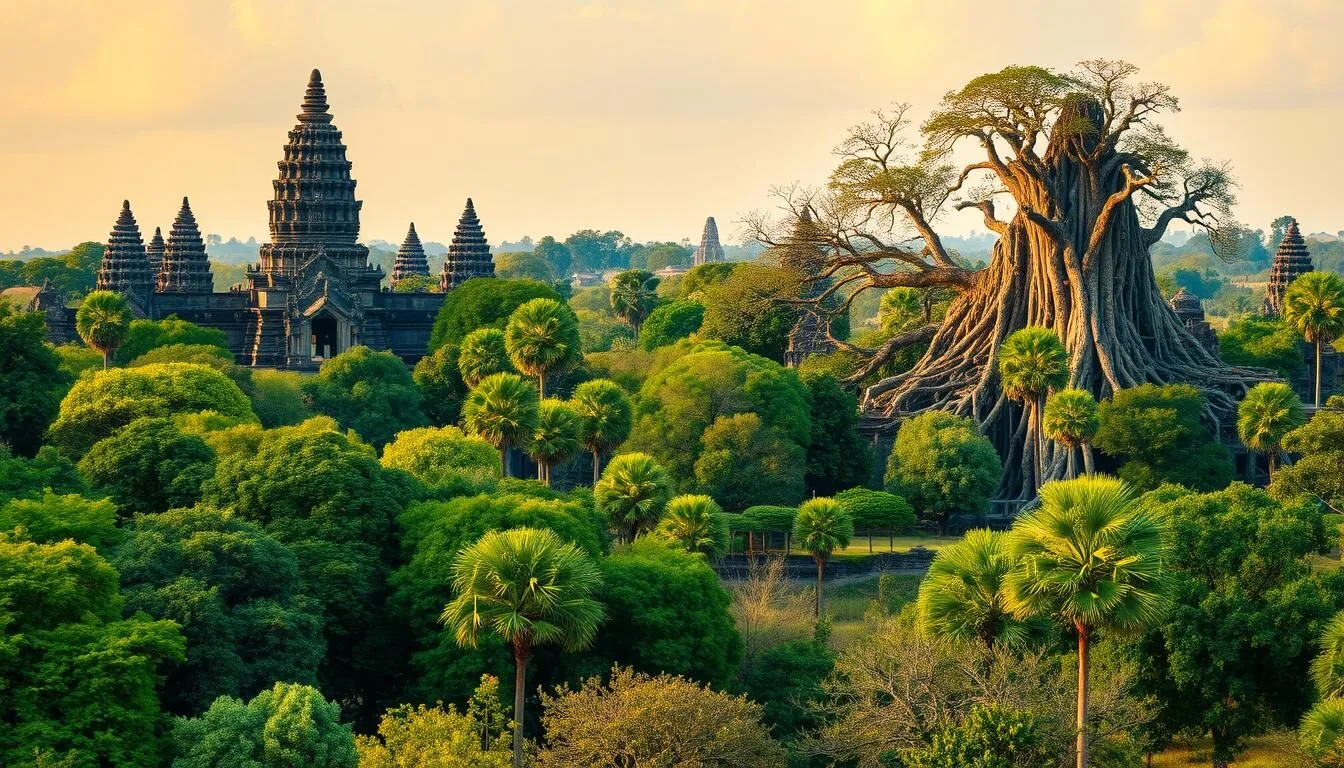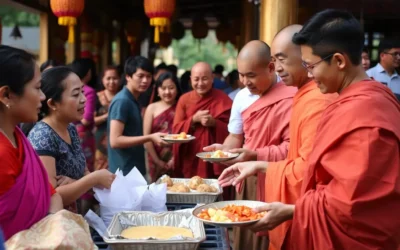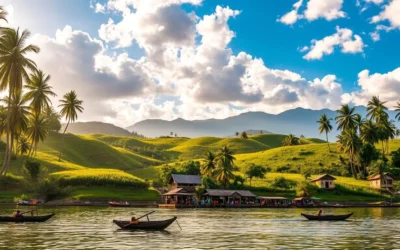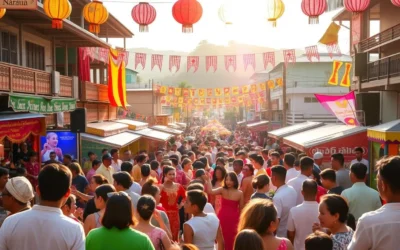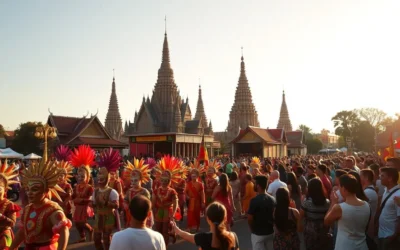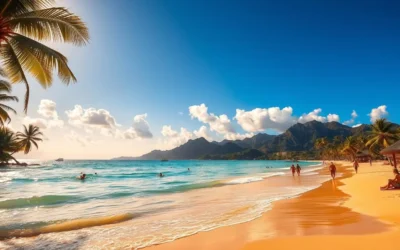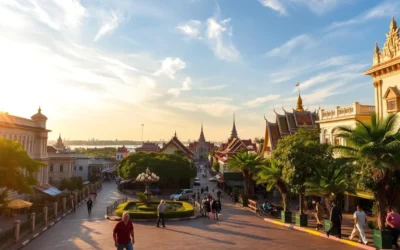✓ Accommodations✓ Flights✓ Rental Cars✓ Tours & Activities
Did you know that Siem Reap, a vibrant city in Cambodia, attracts millions of visitors each year? As the gateway to the magnificent Angkor temple complex, it’s a must-visit destination for anyone traveling to Southeast Asia.
You’ll discover a rich tapestry of culture, history, and adventure as you explore the best things to do in Siem Reap. From the iconic temples to hidden gems, this city offers an unforgettable experience. Whether you’re planning a short trip or a week-long vacation, our comprehensive guide will help you make the most of your time in this fascinating city.
As you wander through the city, you’ll find that Siem Reap is more than just ancient ruins. It’s a thriving hub of activity, with a blend of traditional and modern attractions that will leave you eager to explore more.
Discovering the Magic of Siem Reap
Siem Reap is more than just a gateway to Angkor Wat; it’s a city that boasts its own unique character and attractions. As you explore this vibrant city, you’ll discover a perfect blend of ancient history and modern charm, making it one of the best things to experience in Cambodia.
Why Siem Reap Should Be on Your Travel Bucket List
Siem Reap offers a fascinating glimpse into Cambodia’s complex history while showcasing the resilience and creativity of its people. The city’s warm hospitality and rich cultural heritage make it a must-visit destination for any Southeast Asia itinerary. You’ll find Siem Reap to be surprisingly accessible and affordable, with plenty of accommodation options for every budget.
| Attraction | Description | Best Time to Visit |
|---|---|---|
| Angkor Wat | Ancient temple complex | Early morning |
| Pub Street | Lively nightlife | Evening |
| Tonle Sap Lake | Floating villages | Daytime |
Best Time to Visit Siem Reap
The best time to visit Siem Reap is during the dry season, from November to April. While March and April can be brutally hot, the Spring Equinox offers a unique opportunity to witness the Angkor alignment, making your trip truly magical. If you can, plan your visit during this time for an unforgettable experience.
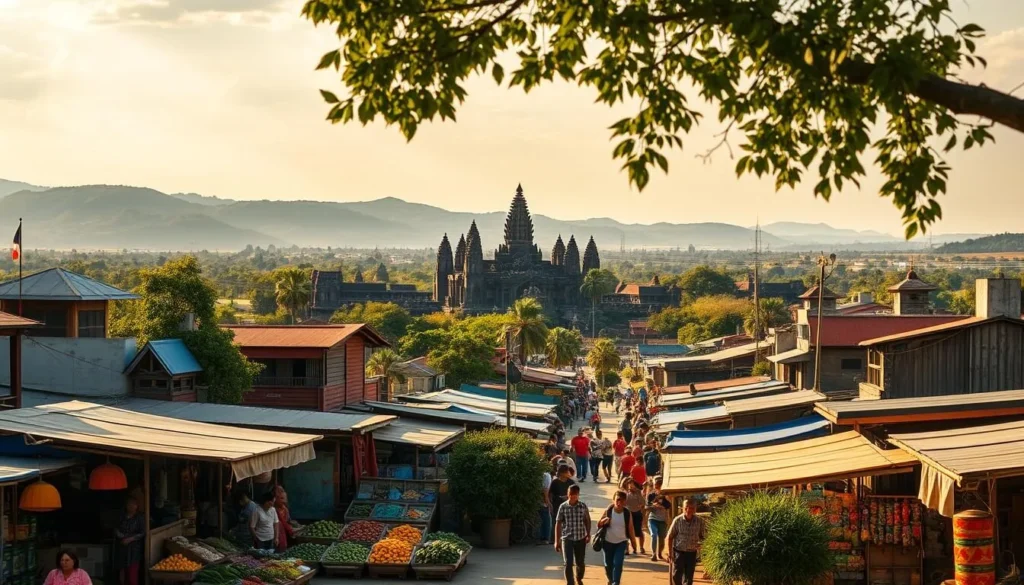
Exploring the Magnificent Angkor Archaeological Park
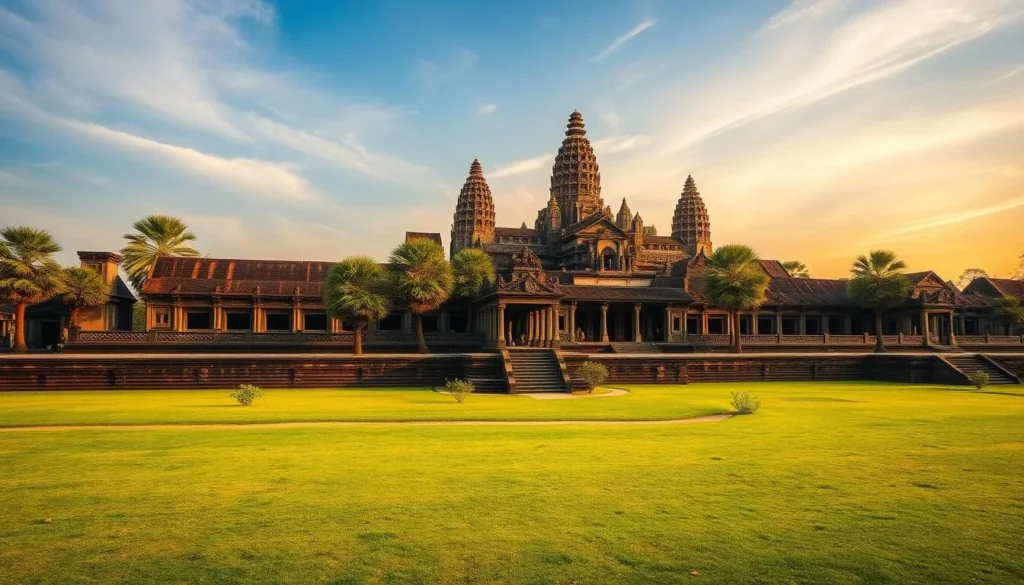
As you step into Siem Reap, the magnificent Angkor Archaeological Park awaits you. This UNESCO World Heritage site is renowned for its temples and rich history, making it a must-visit destination for any traveler.
The park is home to numerous temples, with Angkor Wat being the crown jewel. The main Angkor Wat temple is the largest religious monument globally and a perfect example of classical Khmer architecture.
Angkor Wat: The Crown Jewel
Angkor Wat is an iconic symbol of Cambodia and a testament to the country’s rich cultural heritage. This magnificent temple complex attracts millions of visitors each year, and witnessing the sunrise at Angkor Wat is a truly magical experience.
The temple is surrounded by a massive moat, adding to its grandeur and beauty. As you explore the intricate carvings and structures, you’ll gain a deeper understanding of the historical significance of this site.
Temple Pass Options and Planning Your Visit
To explore the Angkor complex, you’ll need to purchase a temple pass. The options include a 1-day pass ($37), 3-day pass ($62), or 7-day pass ($72). It’s advisable to plan your visit according to the pass you choose to make the most of your time.
The ticket office is located away from the main complex to manage crowds. Plan to arrive early or the day before to secure your pass and avoid long queues.
Sunrise at Angkor Wat: Is It Worth It?
Watching the sunrise at Angkor Wat is a popular activity among tourists. To experience the best views, arrive by 5:00 AM to secure a good viewing spot. The silhouette of the temple against the colorful sky creates unforgettable photos.
If you prefer fewer crowds, consider visiting around 8 am. The complex is vast, so plan your route carefully to avoid temple fatigue and make the most of your visit.
Must-Visit Temples Beyond Angkor Wat
Beyond the iconic Angkor Wat, Siem Reap is home to numerous other temples that are equally breathtaking. While Angkor Wat is a must-visit, the surrounding temples in Siem Reap offer a wealth of historical and cultural experiences. Make sure you allocate enough time to explore these temples beyond Angkor Wat, as each offers a different perspective on Khmer architecture and history.
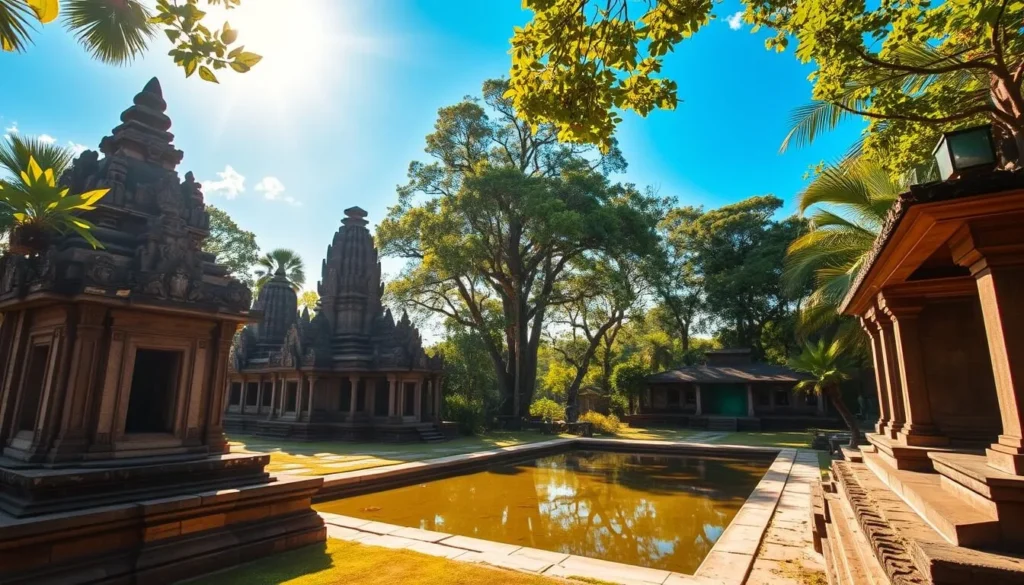
Bayon Temple: The Faces of Angkor Thom
Located in Angkor Thom, Bayon Temple is known for its massive stone faces smiling enigmatically from its 50 towers. This temple is a must-visit when in Siem Reap, offering a unique experience with its over 200 stone faces. It’s about a 20-minute cycle from Angkor Wat, making it an easily accessible destination.
Ta Prohm: The Jungle Temple
Ta Prohm, famously known as the ‘Tomb Raider Temple’, is a sight to behold with its ancient stones being reclaimed by the jungle. The massive tree roots embracing the structures create a surreal atmosphere, making it a fascinating temple to explore. Restoration work has been done to ensure the stability of this temple, allowing visitors to appreciate its intricate carvings and historical significance.
Banteay Srei: The Pink Sandstone Beauty
Banteay Srei, or the ‘Citadel of Women’, is a temple dedicated to Shiva, known for its intricate pink sandstone carvings. Located about an hour from the main temple complex, it’s a detour worth taking for art enthusiasts. The elaborate carvings depict scenes from the epic Ramayana, showcasing some of the finest craftsmanship in Khmer art.
These temples are not only less crowded than Angkor Wat but also provide a more intimate experience, allowing you to appreciate their beauty and historical significance without the hordes of tourists. As you explore these temples, you’ll discover the rich history and cultural heritage that Siem Reap has to offer, making your visit to this place one of the best things you can do in Siem Reap.
Cultural Experiences in Siem Reap
Siem Reap is a treasure trove of cultural experiences, from circus performances to traditional dance shows. When you visit Siem Reap, you can engage with the local culture in various meaningful ways.
Phare Circus: Cambodia’s Unique Circus Experience
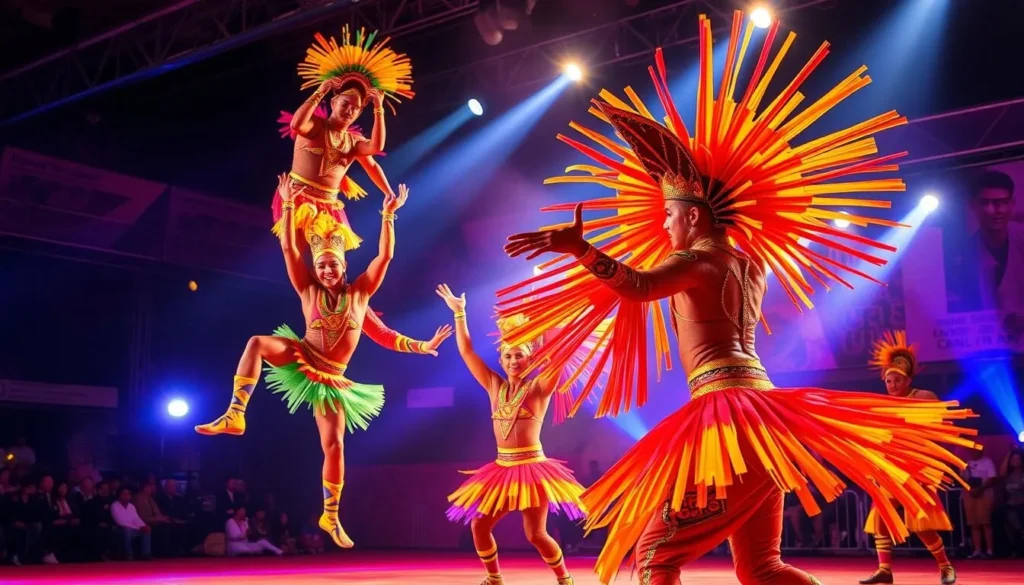
Phare Circus is one of the best things to do in Siem Reap, featuring talented local performers who tell Cambodian stories through acrobatics, theater, and dance. The show is a unique blend of social commentary and spectacular physical feats, often addressing Cambodia’s complex history.
Apsara Dance Performances
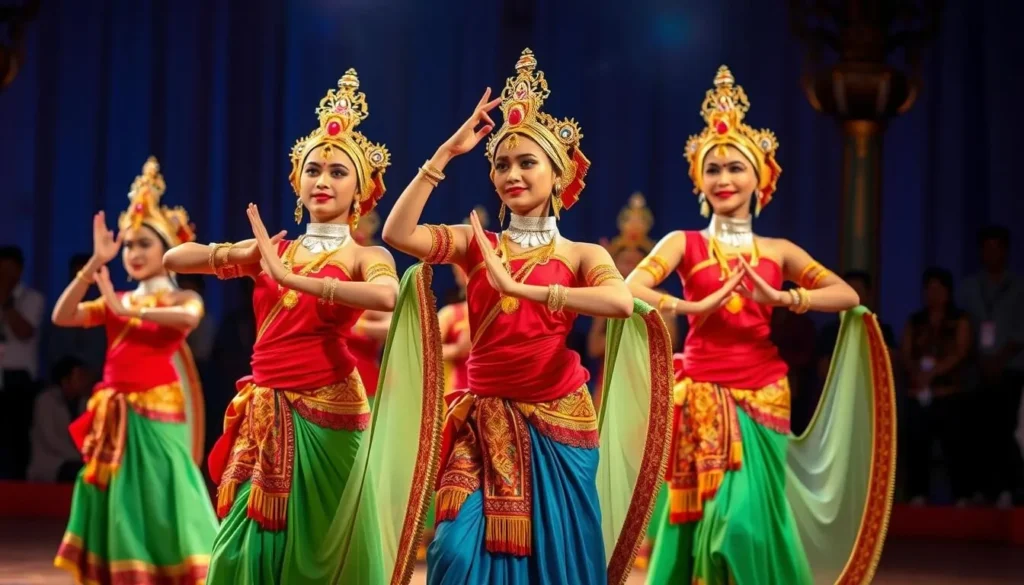
Apsara dance performances provide a glimpse into Cambodia’s classical dance tradition, with graceful movements and elaborate costumes telling ancient stories. Many Apsara performances include dinner, creating a complete evening of cultural immersion and traditional Khmer cuisine.
These cultural shows not only entertain but also support local artists and help preserve traditional art forms that were nearly lost during the Khmer Rouge era. By attending these performances, you are contributing to the local community and experiencing the rich cultural heritage of Siem Reap.
Exploring Siem Reap’s Markets and Shopping
Exploring Siem Reap’s markets is a must-do activity, as they offer a glimpse into the local way of life and a chance to pick up some memorable souvenirs. The city’s vibrant markets provide a wide range of shopping experiences, from handcrafted souvenirs to local street food.
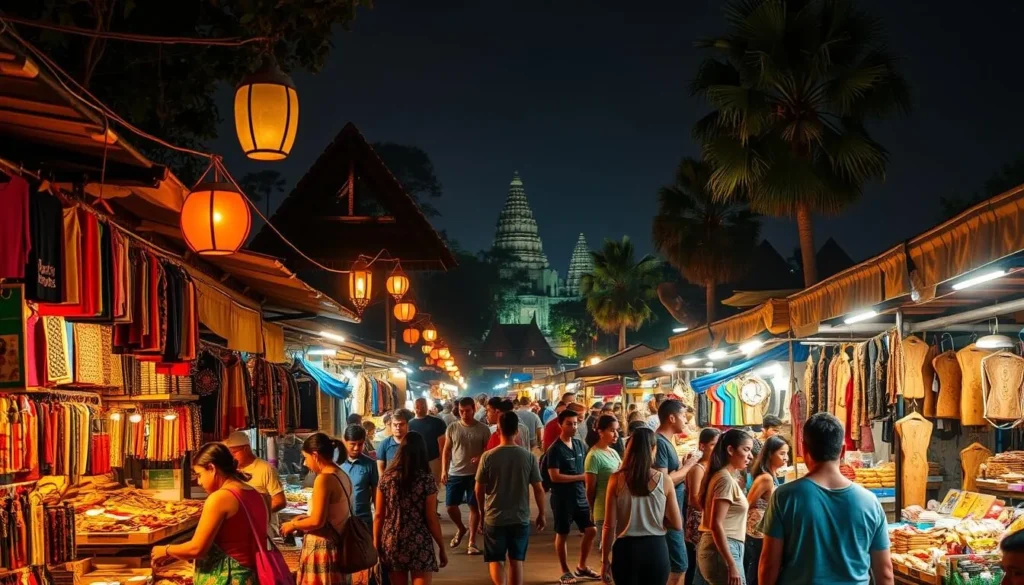
Night Market: Souvenirs and Local Crafts
The Night Market in Siem Reap comes alive after dark, with hundreds of stalls selling clothing, artwork, spices, and handmade crafts. It’s the perfect place to find unique souvenirs and practice your haggling skills, as bargaining is expected and part of the fun.
Old Market (Psah Chas) and Made in Cambodia Market
For a more authentic experience, visit the Old Market (Psah Chas), where locals shop for fresh produce, meat, and household goods during the day. The Made in Cambodia Market stands out for its commitment to locally produced goods, ensuring that your purchases directly support Cambodian artisans. Unlike other markets in the city, it offers a more relaxed shopping experience without aggressive sales tactics.
| Market | Specialty | Atmosphere |
|---|---|---|
| Night Market | Souvenirs, local crafts | Bustling, vibrant |
| Old Market (Psah Chas) | Fresh produce, local goods | Authentic, busy |
| Made in Cambodia Market | Locally made crafts | Relaxed, serene |
Artisan Workshops and Cultural Centers
Discover the rich cultural heritage of Siem Reap by visiting its artisan workshops and cultural centers. Siem Reap is home to several artisan workshops and cultural centers that preserve traditional Cambodian crafts and provide sustainable employment for local people.
Artisans d’Angkor: Preserving Traditional Crafts
Artisans d’Angkor stands out as a social enterprise that trains young Cambodians in traditional crafts, helping revive skills nearly lost during the Khmer Rouge era. At their main workshop in Siem Reap, you can watch artisans create intricate stone carvings, wood sculptures, lacquerware, and silk paintings using traditional methods.
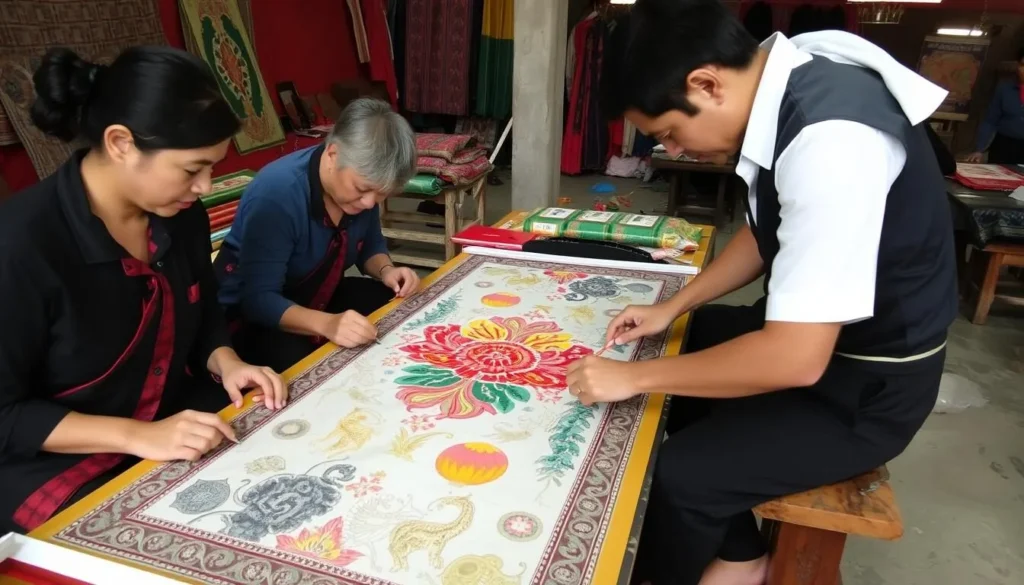
Angkor Silk Farm Tour
The Angkor Silk Farm, located about 20 minutes from the city center, offers free tours that demonstrate the entire silk-making process from mulberry cultivation to finished textiles. This silk farm tour is one of the most educational experiences in Siem Reap, showing the painstaking way silk is produced by hand using techniques passed down through generations.
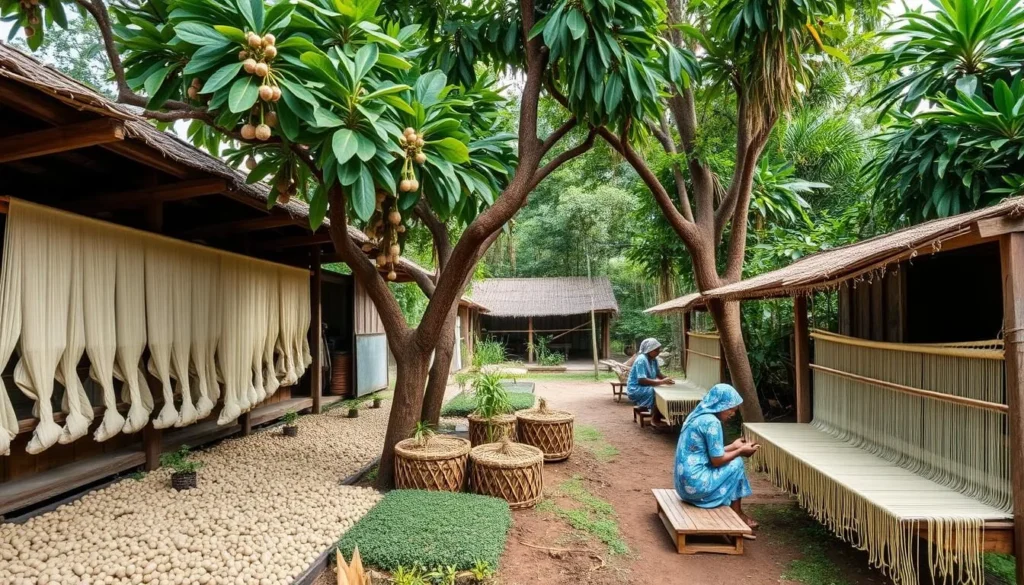
Purchasing souvenirs from these workshops ensures your money directly supports local artisans who receive fair wages and benefits—a responsible way to shop in Cambodia. Both places offer free demonstrations but have beautiful handicrafts available for purchase, with the quality of craftsmanship justifying the higher price point.
Siem Reap, Cambodia: Best Things to Do for Food Lovers
For food enthusiasts, Siem Reap is a paradise that promises an unforgettable gastronomic adventure. The city offers a wide range of culinary experiences, from street food to cooking classes, allowing you to dive into the heart of Cambodian cuisine.
Must-Try Khmer Dishes and Where to Find Them
Siem Reap is renowned for its delicious Khmer dishes, which blend sweet, sour, salty, and spicy flavors. Must-try dishes include Fish Amok, a coconut curry steamed in banana leaves, Lok Lak, a stir-fried beef dish, and Nom Banh Chok, Khmer noodles. These dishes showcase the unique flavors of Cambodian cuisine and can be found at various street food stalls and restaurants throughout the city.
Cooking Classes: Learn to Make Authentic Cambodian Cuisine
Cooking classes are one of the best things to do in Siem Reap for food enthusiasts. These classes typically include a market tour to select fresh ingredients, followed by hands-on preparation of traditional dishes. Popular cooking schools like Khmer Gourmet and Lily’s Secret Garden offer classes that teach you to prepare 3-4 traditional dishes that you can recreate at home.
Pub Street and Nightlife
When night falls, Pub Street in Siem Reap comes alive with neon lights, music, and a lively atmosphere. This famous street is the epicenter of Siem Reap’s nightlife, offering dozens of bars and restaurants with happy hour specials, making it an affordable place to enjoy cocktails, beer, and international cuisine.
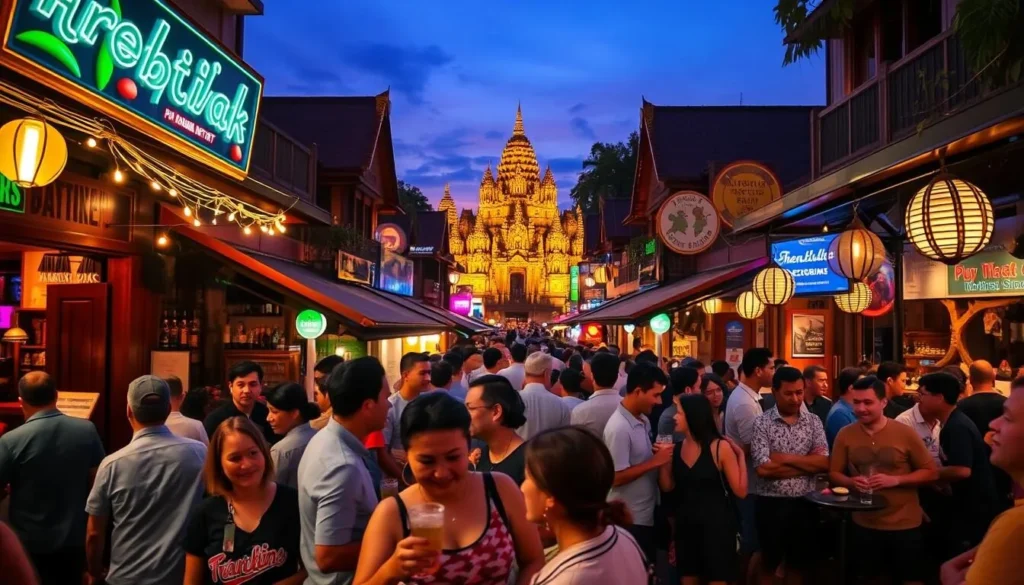
Best Bars and Restaurants on Pub Street
Popular venues on Pub Street include Angkor What? Bar, one of the oldest establishments, and Red Piano, famous for its “Tomb Raider” cocktail. For a more sophisticated night out, venture slightly off Pub Street to Miss Wong, a stylish cocktail bar with a Shanghai-inspired atmosphere.
Night Entertainment Beyond Drinking
Night entertainment options in Siem Reap extend beyond drinking. You can explore night markets, watch street performances, or visit late-night food stalls selling everything from ice cream rolls to barbecue. The area around Pub Street is generally safe and walkable at night, with tuk-tuks readily available when you’re ready to return to your accommodation.
Day Trips from Siem Reap
To truly experience the essence of Cambodia, consider taking day trips from Siem Reap to nearby attractions. These excursions offer a glimpse into the country’s diverse landscapes and rural life, making your visit even more memorable.
Tonle Sap Lake and Floating Villages
Tonle Sap Lake, the largest freshwater lake in Southeast Asia, is home to several floating villages where communities live on the water year-round. The most accessible floating village is Chong Khneas, but for a more authentic experience, visit Kampong Phluk or Kampong Khleang. When visiting these villages, be cautious of scams and research ethical tour operators to ensure your money benefits the local community.
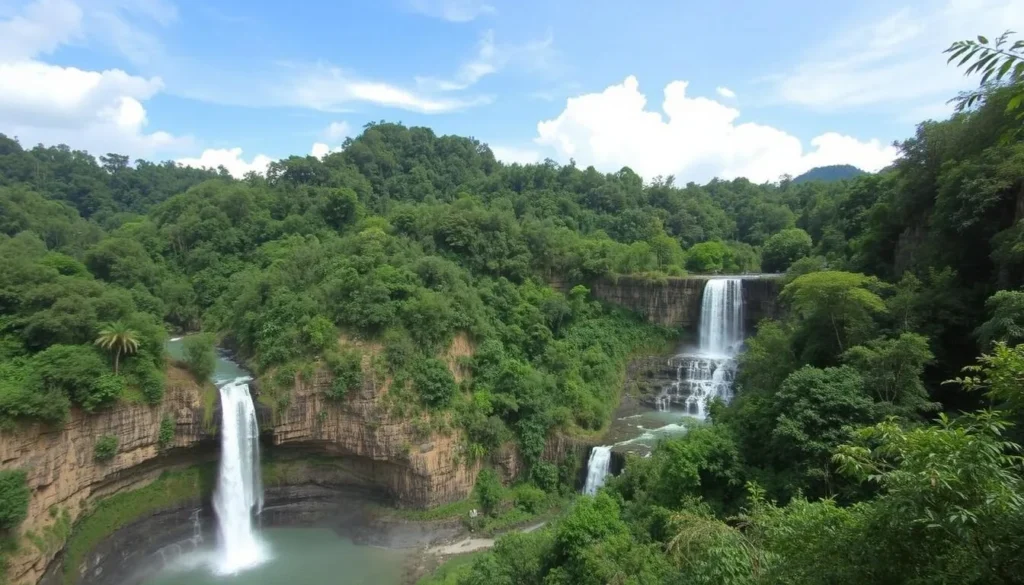
Kulen Mountain and Waterfall
Phnom Kulen National Park, considered the birthplace of the Khmer Empire, offers a refreshing escape with its mountain landscapes, waterfalls, and ancient river carvings. You can swim in the cool waters of the Kulen Waterfall, making it a perfect way to beat the Cambodian heat. For the adventurous, renting a motorbike or taking an ATV tour can enhance your experience.
Unique and Off-Beat Experiences
Siem Reap is a treasure trove of off-beat experiences waiting to be explored. As you venture beyond the typical tourist attractions, you’ll discover a city that’s rich in history, culture, and innovation.
APOPO Visitor Center: Meet the Hero Rats
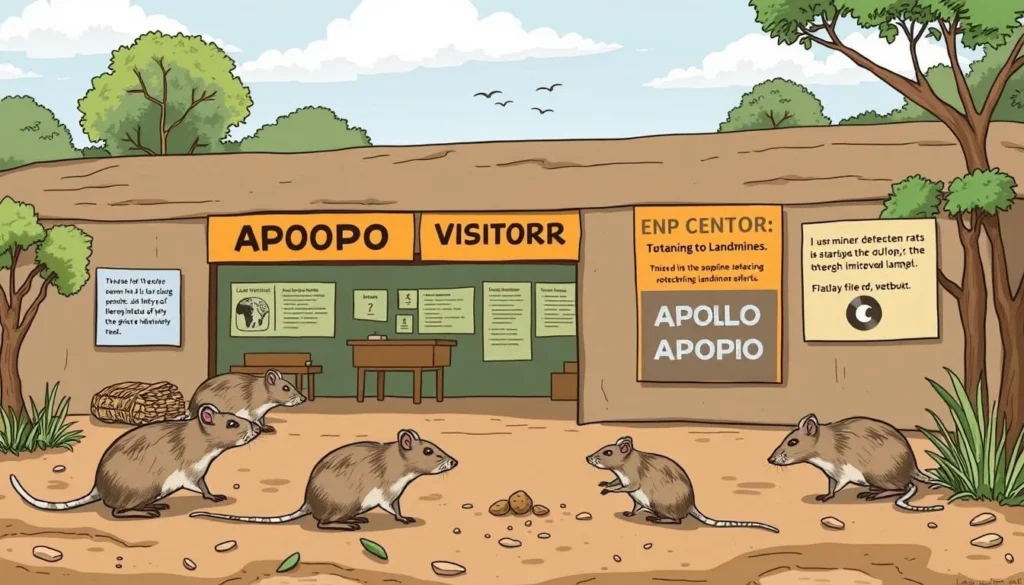
The APOPO Visitor Center is a one-of-a-kind attraction that showcases the incredible work of “HeroRATs” – specially trained African giant pouched rats that detect landmines and unexploded ordnance throughout Cambodia. You’ll have the opportunity to watch these intelligent animals demonstrate their detection skills and even meet some of the hero rats up close.
Cambodian Landmine Museum
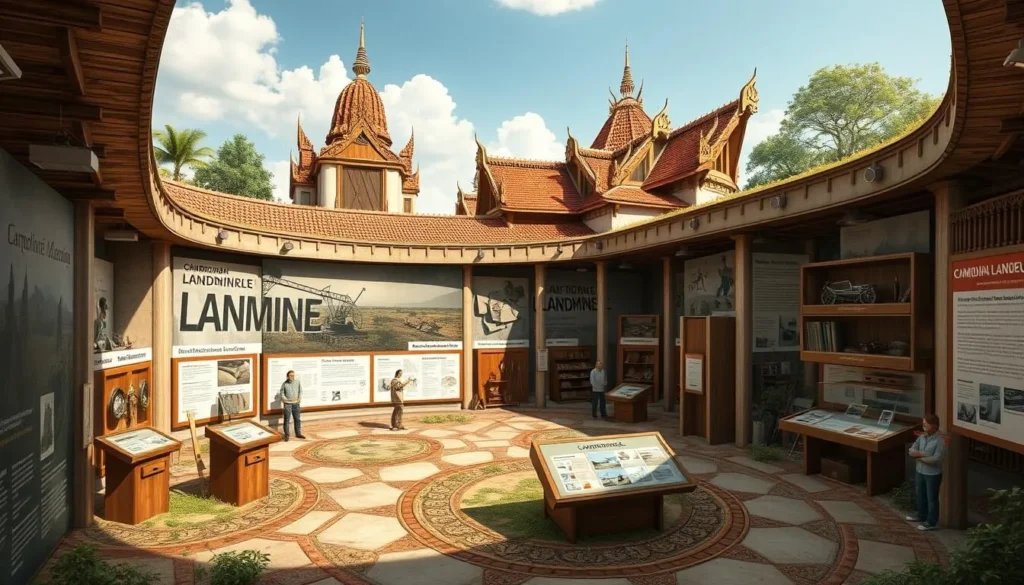
The Cambodian Landmine Museum, founded by former child soldier Aki Ra, tells the sobering story of Cambodia’s landmine crisis through personal stories and educational exhibits. This museum not only educates visitors about the devastating impact of landmines but also functions as a relief center for landmine victims, with proceeds supporting affected children.
These unique experiences provide a deeper understanding of Cambodia’s recent history and recovery efforts. By visiting the APOPO Visitor Center and the Cambodian Landmine Museum, you’ll be supporting organizations that prioritize the health and well-being of the local people.
Wellness and Relaxation in Siem Reap
After a day of exploring the ancient temples of Siem Reap, rejuvenate your senses with the city’s wellness offerings. Siem Reap offers an abundance of affordable spa treatments, with traditional Khmer massages starting from as little as $6-10 for a one-hour session.
Affordable Spa Treatments and Massages
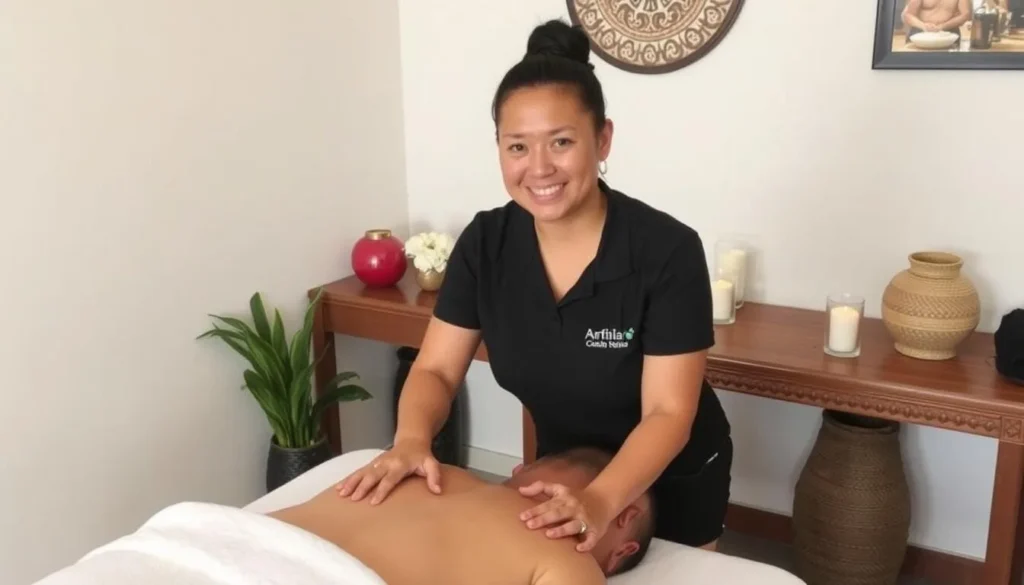
Siem Reap is a haven for those seeking relaxation, with many spas offering unique treatments like herbal compresses and coffee scrubs. You can indulge in a rejuvenating massage or other spa treatments, helping you unwind and recharge.
Yoga and Meditation Classes
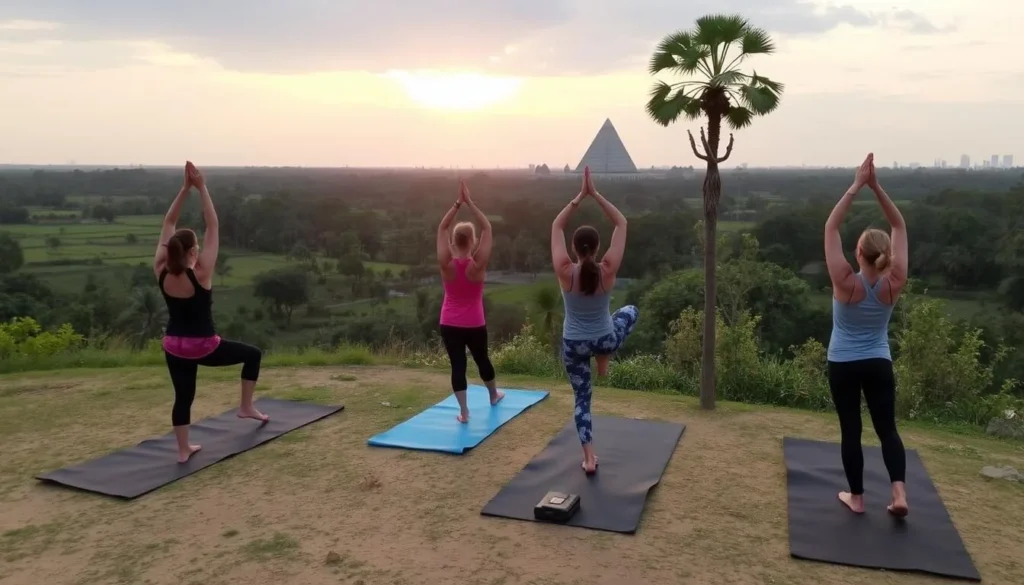
Yoga and meditation classes are widely available throughout Siem Reap, with many studios offering drop-in classes suitable for all experience levels. You can also experience meditation sessions with Buddhist monks at Peace Café, adding a unique cultural dimension to your wellness practice.
Where to Stay in Siem Reap
Your Siem Reap adventure starts with selecting the ideal accommodation that fits your style. The city offers a diverse range of places to stay, from budget-friendly hostels to luxury resorts, ensuring that you find the perfect spot to rest and recharge after a day of exploring the ancient temples and vibrant markets.
Best Areas to Stay for Different Types of Travelers
The city is divided into several areas, each catering to different types of travelers. The Old Market/Pub Street area is ideal for first-time visitors, offering proximity to restaurants, shops, and nightlife. For a more relaxed atmosphere, the Wat Bo area is a great choice, providing a quieter stay while still being close to the action. The French Quarter is perfect for those seeking a refined experience, with its colonial architecture and upscale hotels.
Accommodation Options for Every Budget
Siem Reap offers options for every budget. Budget travelers can find affordable hostels like Mad Monkey or Onederz for under $10 per night for dorm beds or $20-30 for private rooms. Mid-range travelers can enjoy boutique hotels with swimming pools and lush garden settings for $30-70. Luxury seekers will appreciate international brands like Raffles and Park Hyatt, as well as stunning boutique properties with world-class amenities at competitive prices.
Getting Around Siem Reap
Navigating Siem Reap is relatively easy, thanks to its compact size and affordable transportation. You can choose from a variety of options to suit your preferences and budget.
Transportation Options
Tuk-tuks are the most popular way to get around Siem Reap, with short rides within the city costing $1-2 and day trips to Angkor costing $15-20. When hiring a tuk-tuk, make sure to negotiate the price before starting your journey.
For airport transfers, pre-booking a tuk-tuk or taxi is recommended, with the 20-30 minute ride to the city center costing around $7-9.
Alternative Modes of Transport
Renting bicycles is an eco-friendly and budget-conscious option at just $2-3 per day, perfect for exploring the city or nearby temples. E-bikes offer a good compromise between bicycles and motorized transport, giving you independence without the physical exertion in the Cambodian heat.
For longer stays, some visitors rent motorbikes ($7-10 per day), though this requires confidence in navigating local traffic and usually an international driving permit.
Ethical Tourism in Siem Reap
As you explore Siem Reap, it’s essential to consider the impact of your travels on the local community. With the rise of tourism, there’s a growing need to distinguish between activities that benefit the local people and those that exploit them.
Supporting Local Communities
One of the best ways to ensure your tourism dollars benefit the local community is by supporting local businesses, social enterprises, and NGOs. Look for restaurants like Haven, Marum, or Spoons that train vulnerable youth in hospitality skills. You can also visit shops like Rehash Trash where women create products from recycled materials.
- Choose local eateries and cafes that source ingredients from nearby farms.
- Visit local markets to purchase handmade crafts and support artisans.
Activities to Avoid: Tourist Traps and Unethical Attractions
Be cautious of “orphanage tourism” in Cambodia, as many so-called orphanages exploit children for profit. Avoid unethical animal attractions, including elephant rides and performances, which often involve cruel training methods. Research floating village tours carefully, as many are exploitative operations where local people receive little benefit.
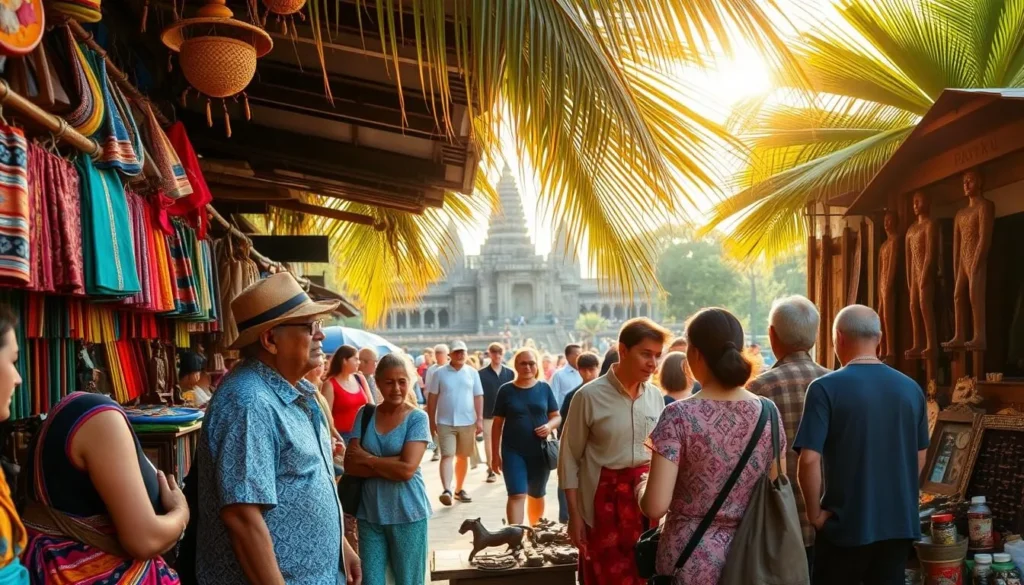
- Avoid supporting businesses that exploit local people.
- Be mindful of your actions and their impact on the local environment.
Planning Your Perfect Siem Reap Itinerary
To truly experience the best of Siem Reap, it’s essential to plan your trip meticulously, balancing temple visits with cultural experiences. With so many things to see and do, you can easily feel overwhelmed, but a well-structured itinerary can make all the difference.
3-Day Itinerary for First-Time Visitors
For first-time visitors, a 3-day itinerary is ideal. Dedicate one day to the main Angkor circuit, one day to further temples or the Grand Circuit, and one day to explore the city and cultural attractions. Here’s a suggested breakdown:
- Day 1: Sunrise at Angkor Wat, followed by Bayon and Ta Prohm, ending with sunset at Pre Rup temple.
- Day 2: Explore city attractions like Artisans d’Angkor, the Angkor National Museum, and an evening performance of Phare Circus or Apsara dancing.
- Day 3: Visit more distant temples like Banteay Srei or take a day trip to Tonle Sap Lake, followed by shopping at the night markets.
Extended Stay: What to Do with Extra Time
If you have extra time in Siem Reap, consider adding day trips to Kulen Mountain, visiting lesser-known temples, or taking a cooking class to deepen your understanding of Khmer culture. Make sure to build in downtime—the Cambodian heat can be intense, and most people find that 2-3 temples per day is plenty before fatigue sets in.
Here’s a sample table to help you plan your days:
| Day | Morning | Afternoon | Evening |
|---|---|---|---|
| 1 | Sunrise at Angkor Wat | Bayon and Ta Prohm | Sunset at Pre Rup |
| 2 | Artisans d’Angkor | Angkor National Museum | Phare Circus or Apsara dancing |
| 3 | Banteay Srei | Tonle Sap Lake | Night markets |
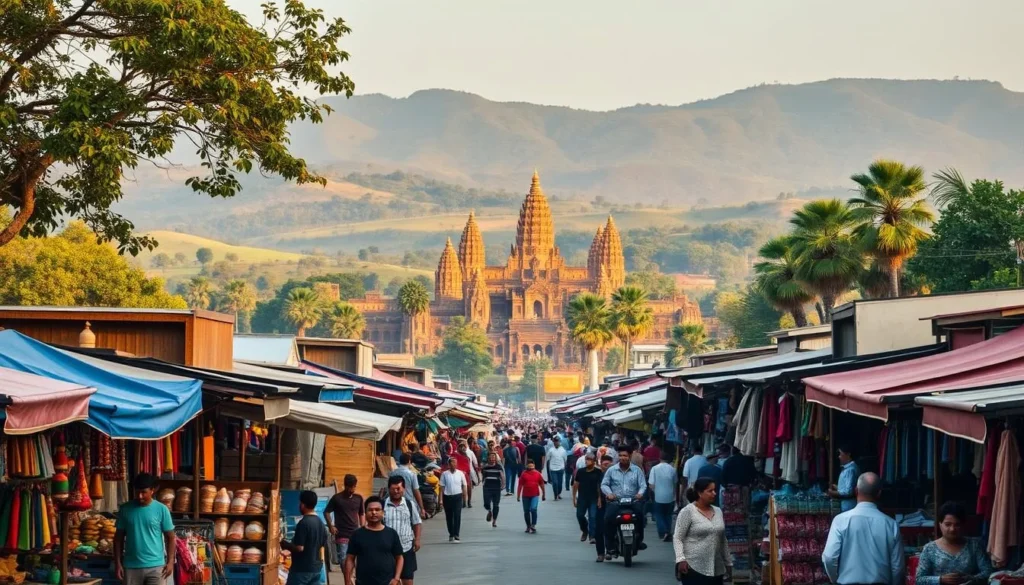
Conclusion: Making the Most of Your Siem Reap Adventure
With its unique blend of traditional and modern attractions, Siem Reap is a city that will captivate your senses and leave a lasting impression. As you explore this captivating city, you’ll discover that it’s not just about visiting the magnificent Angkor Wat temple; it’s about immersing yourself in the local culture and way of life.
One of the best things about Siem Reap is its accessibility for all types of travelers. Whether you’re a budget backpacker or a luxury seeker, there’s something for everyone in this vibrant city. You can spend your days exploring the surrounding temples, trying new foods, and experiencing the rich Cambodian culture.
To make the most of your trip to Siem Reap, consider visiting during the shoulder seasons (May-June or September-October) to avoid the crowds. Don’t try to pack too much into each day – the heat and humidity can be draining, and part of the joy of Siem Reap is taking time to soak in the atmosphere. Whether you spend three days or a week in this captivating city, you’ll likely leave with a list of things you still want to experience on your next visit.
In Siem Reap, you’ll find a lot to explore, from the ancient wonders of Angkor Wat to the modern attractions of the city itself. As one of the best things Siem Reap has to offer, the city’s blend of tradition and modernity makes it an ideal destination in Southeast Asia. Make sure to list your priorities and take part in responsible tourism by supporting local businesses and respecting cultural norms.
The above is subject to change.
Check back often to TRAVEL.COM for the latest travel tips and deals.
